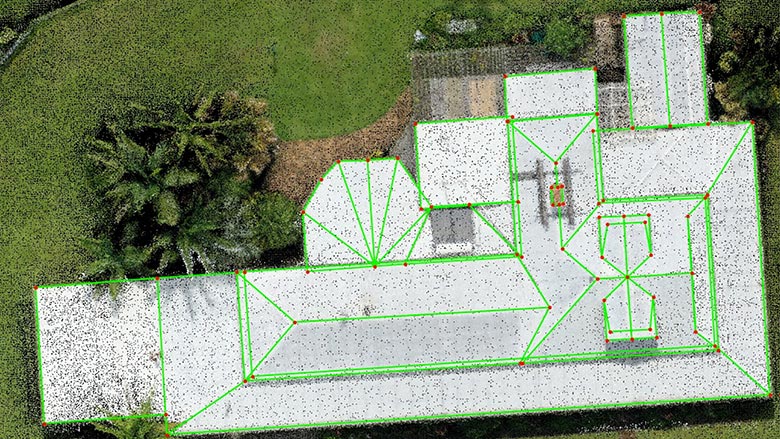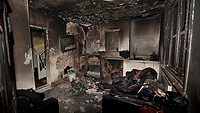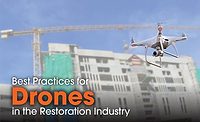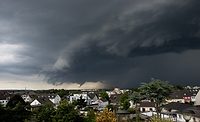Expediting Restoration Claims With the Help of Drones

Photo credit: DroneDeploy
In the aftermath of a natural disaster, quick and efficient property inspections are critical for affected civilians and relief efforts. Without efficient inspections and insurance assessments on damaged properties, it can take weeks or months for accurate payouts and critical repairs, displacing families and damaging businesses.
For insurers, a backlog of disaster claims also poses a disruption to routine business, occupying a majority of resources and slowing down response times.
Drones for Roof Assessments
Drone technology significantly reduces this assessment timeline by making inspections safer, more efficient and significantly faster. In fact, insurance companies were some of the earliest adopters of drone technology and continue to expand their usage of the technology with new advancements in artificial intelligence (AI) and other fields. A 2016 report by PwC estimated the “addressable market of drone-powered solutions in the insurance industry” to be at $6.8 billion.
Similarly, Aerologix, an Australian-based platform for drone pilots, mobilized its pilot network and DroneDeploy’s software to provide on-demand roof assessments and reports following severe hail storms across southeast Queensland. Aerologix worked hand-in-hand with a major roofing company in the region to facilitate inspections, generate comprehensive roof reports via DroneDeploy, and share these reports with insurance and roofing companies for expedited relief.
Through AI technology, the platform could also distinguish between various roof types and report on specific angles and facades that require repair based on water and physical damage from the hail storm. Aerologix estimates that the hundreds of roof assessments completed using drone data technology saved thousands in labor costs and sped up inspection processes by weeks.
Ensuring Assessor Safety
Along with efficiency benefits, the massive safety benefits of drone usage for disaster inspections cannot be overstated. DroneDeploy has stepped in to provide aerial mapping and inspection services when it’s unsafe for field teams or assessors to do so themselves in the aftermath of disasters such as wildfires, hurricanes or earthquakes. After California’s devastating 2018 Camp Fire, we worked with public safety and fire personnel to offer critical data to FEMA relief funds. We also assisted with the planning and response to potential mudslides, and provided accelerated inspections to help process insurance claims faster for wildfire victims.
Over three days, 16 teams of public safety professionals worked day and night to complete more than 500 drone flights capturing over 70,000 images of the areas surrounding Paradise and Magalia. The result: close to 500GB of drone data, which was turned into 26.5 square miles (15,000 acres) of high-resolution aerial maps accessible to state agencies and the public. This level of detail and transparency allows agencies to use drone technology as a proactive tool. Not only can drones assist in assessing the aftermath of a disaster, but aerial imagery can also spot any continued areas of risk – like mudslides or weakened structures – without putting assessors at risk of physical injury.
The Future of Drone Usage for Restoration
Drone software and hardware capabilities are also expanding each passing year, with significant implications for the restoration and insurance industries. Advancements in AI and photogrammetry make for more accurate and comprehensive reporting on damaged structures. For example, thermal mapping via drones allows assessors to spot leaks and water damage on a roof without needing to climb said roof and compromise their safety. For more minor or less visible damages, AI can also help identify facade or foundation cracks, without workers needing to physically get close to unsound buildings.
Through drone adoption, insurers and restorers can prioritize both assessor safety and inspection efficiency. Drone platforms ensure property damages are better recorded, shared and analyzed, leading to reduced lag times and expedited claims for those most in need of relief – one less thing to worry about following a disaster.
Looking for a reprint of this article?
From high-res PDFs to custom plaques, order your copy today!







